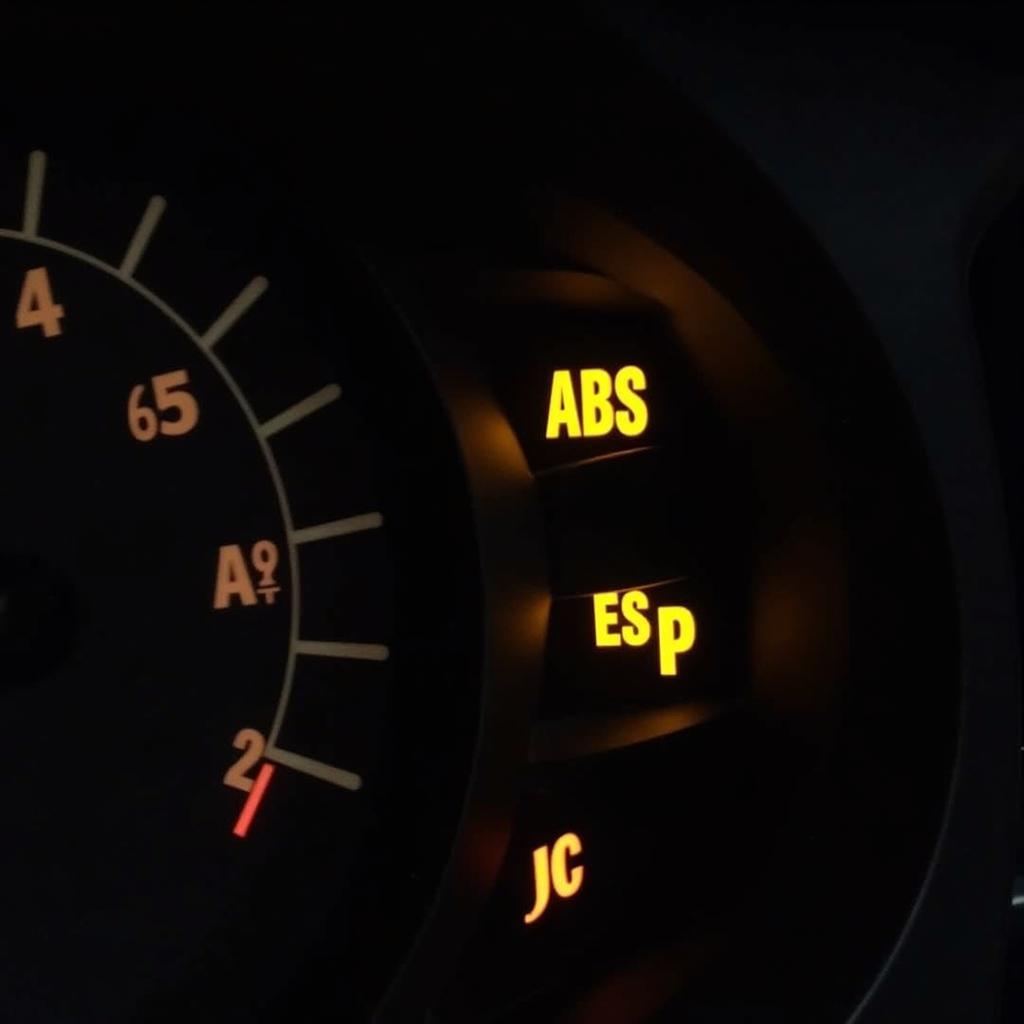The brake warning light on your dashboard is a crucial safety feature, designed to alert you to potential issues with your vehicle’s braking system. Ignoring this warning light could lead to dangerous situations on the road. Understanding the common causes of a brake warning light can help you address the problem promptly and ensure your safety.
Common Culprits Behind a Glowing Brake Warning Light
There are several reasons why your brake warning light might illuminate, ranging from simple fixes to more complex issues:
1. Low Brake Fluid Level
One of the most common reasons for a brake warning light is low brake fluid. Brake fluid is essential for transferring the force you apply to the brake pedal to the brake calipers, which then squeeze the brake pads against the rotors, slowing or stopping your car.
How to check:
- Locate the brake fluid reservoir under the hood. It’s usually a translucent plastic container with a cap labeled “Brake Fluid.”
- Check the fluid level. If it’s below the “Min” or “Low” mark, you’ll need to add more.
Expert Insight: “Always refer to your owner’s manual for the correct type of brake fluid for your vehicle,” advises John Miller, a seasoned automotive engineer with over 20 years of experience. “Using the wrong type of fluid can damage your braking system.”
2. Worn Brake Pads
Your brake pads are designed to wear down over time. When they reach a certain thickness, a wear indicator built into the pad will contact the rotor, triggering the brake warning light. This indicates it’s time for a brake pad replacement.
What to do:
- Schedule an appointment with a trusted mechanic to have your brake pads inspected and replaced.
3. Faulty Brake Light Switch
The brake light switch is responsible for activating your brake lights when you press the brake pedal. A malfunctioning switch can cause the brake warning light to illuminate, often alongside brake lights that don’t work properly.
Expert Insight: “A faulty brake light switch might seem like a minor issue, but it can impact safety,” says Sarah Chen, an experienced automotive electrician. “Without functioning brake lights, you risk a rear-end collision, especially at night.”
4. ABS Problems
Most modern vehicles come equipped with an Anti-lock Braking System (ABS). The ABS prevents wheel lockup during hard braking, helping you maintain steering control. If the ABS system detects a fault, it will illuminate the brake warning light.
What to do:
- If you suspect an ABS issue, it’s best to take your vehicle to a qualified mechanic for diagnosis and repair.
5. Issues with the Master Cylinder
The master cylinder is a vital component of your braking system. It converts the force from your foot on the brake pedal into hydraulic pressure that activates the brakes. If the master cylinder fails, you may experience a soft or spongy brake pedal feel along with the illuminated warning light.
Expert Insight: “A leaking or malfunctioning master cylinder requires immediate attention,” emphasizes David Garcia, an ASE-certified master technician. “This is a serious issue that can significantly compromise your ability to stop safely.”
Conclusion
A glowing brake warning light should never be ignored. It signals a potential problem with your braking system that requires immediate attention. While some causes, like low brake fluid, might be simple fixes, others require professional diagnosis and repair. To ensure your safety and the safety of others on the road, address any brake warning light promptly by visiting a qualified mechanic.

